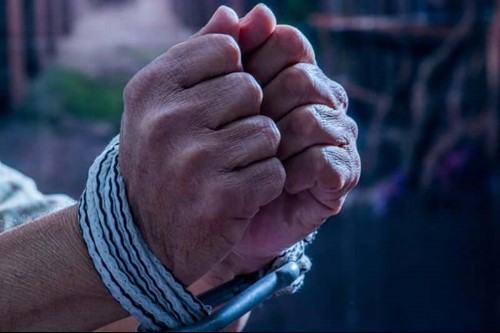Stopping Modern Slavery - What Can We Do?
In August 1833, The Slavery Abolition Act was given royal assent and became enshrined in British law. Effectively, it made ownership of slaves illegal in the British Empire.
Many other countries followed suit, which ultimately led to the United Nations General Assembly in 1948, inserting an article in the Universal Declaration of Human Rights, stating:
“No one shall be held in slavery or servitude; slavery and the slave trade shall be prohibited in all their forms.”
Unfortunately, despite the best efforts of the UN and the wider world, slavery still exists. While it may not exist in the way portrayed by books such as “12 Years a Slave,” it continues to happen all over the globe, and even in the UK.
Let’s explore what modern slavery is, what it means, what The Modern Slavery Act 2015 entails, and what you can do to help stop this practice once and for all. We’ll also consider the impact of stopping slavery on the supply chain, including procurement risks and global sourcing of procurement and ways supplier compliance management makes a difference.
What is modern slavery?

Whether it is women forced into prostitution; children working in sweatshops; men forced into agriculture or young girls forced to marry men; these people are being controlled by those who seek to exploit them. Modern slaves have no freedom, no choice, and must do as they are told for fear of reprisal.
According to data from anti-slavery, a charity seeking to end slavery in all its forms, there are an estimated 40.3 million people in modern slavery all over the world. Scrutinizing the figure, you can see an approximate breakdown here:
- 10 million children
- 9 million people in forced labour
- 4 million people in forced marriage
- 8 million people in forced sexual exploitation.
Unlike slavery of the past, where slavers owned other human beings as their property, modern slavery is more about being exploited and being completely controlled by another person or group of people, without being able to escape.
Anti-slavery say that someone is in slavery if they are:
- forced to work – through coercion, or mental or physical threat;
- owned or controlled by an ’employer’, through mental or physical abuse or the threat of abuse;
- dehumanised, treated as a commodity or bought and sold as ‘property’;
- physically constrained or have restrictions placed on their freedom of movement.
Forms of modern slavery

The most common forms of slavery featured today are listed below:
-
Child slavery – often confused with child labor, child slavery occurs when the victim is exploited for someone else’s gain. Examples include: child trafficking, child soldiers, child marriage, and domestic slavery.
-
Debt bondage – occurs when people borrow money, can’t repay the debt, and then are forced into work to pay off the debt, and in the process, losing control of the terms of their employment and debt itself.
-
Descent-based slavery – a hereditary type of slavery where children become slaves because their parent(s) remain captured and enslaved.
-
Forced labor – undertaking work or services where captors are forced to do it under fear of reprisal.
-
Forced and early marriage – when someone is married against their will and cannot leave the marriage. Most child marriages can be considered slavery.
-
Human trafficking – involves moving, recruiting, or holding people against their will, to exploit them using violence, threats of coercion.
How does slavery happen?

Slavery can affect people of any age, race, or gender, but there are groups of people that are vulnerable to being driven into slavery.
It could be someone currently struggling to make ends meet, and feels they have no chance of getting a decent job. In desperation, the person turns to a job offer abroad that sounds too good to be true – and often is.
Alternatively, it could be a young girl who lives in a society where early marriage is acceptable but is forced to marry an older man.
Or it could be someone who has built up debt with another party, can’t afford to repay it, and is coerced into working to pay off the debt, with the repayment terms constantly changing.
Slavery happens frequently where the law is weaker and corruption is widespread. It can also happen to individuals or groups of people whose rights aren’t protected, such as migrants with complex visa situations.
The most common misconception with modern slavery is that it takes place almost exclusively overseas in the developing world. This isn’t true, as every country in the world has modern slaves in some guise.
The UK is one such example, with figures from the Home Office in 2014 stating that there are between 10,000 and 13,000 potential victims of modern slavery in the UK.
However, analysts from the Global Slavery Index (GSI) estimate this figure to be much higher and report it to be in the region of 136,000 in 2016, as of the latest figures published in 2018.
The UK National Crime Agency (NCA) speculates the discrepancy in these figures is because victims of modern slavery are reluctant or unable, because of fear of reprisal, to report their situation to the authorities.
Modern slavery in the supply chain

Supply chains, including those in Britain and all over the world, can be affected by modern slavery. Whether it is the cocoa in your chocolate bar, cotton in your clothing, or the mobile phone in your pocket, many items, when considering their raw materials, anything could be made using slaves. Let’s consider the potential impact of stopping slavery on the supply chain.
Because of the increasing complexity of global supply chains, it can be tricky to track a component of an order back to a specific manufacturer. For instance, a t-shirt must go through a long line of producers, manufacturers, distributors, and retailers before it gets in consumers’ hands. Also, because of the number of organizations involved in the process of bringing the t-shirts to consumers, the further down the supply chain consumers go, the harder it is to determine whether slaves were used or not.
Closer to home, there are cases of slavery being used in the UK supply chains for a variety of purposes.
One high profile case that came to light in 2015 involved the use of scores of Lithuanian migrants, lured to the UK on the promise of a better life. In this article by the Guardian, the migrants describe their experience as chicken catchers and egg collectors for DJ Houghton.
In summary, the Lithuanians stated they were victims of violence, being debt-bonded on immediate arrival in the UK, deprived of food, sleep and basic accommodation. They were also forced to urinate and defecate into carrier bags as they worked.
The case was settled for over £1 million in compensation after a high court ruling found them to be guilty of failing to pay the minimum wage, made unlawful deductions from wages and failed to provide adequate provision to eat, drink and rest. Many supermarkets boycotted DJ Houghton because of the way the chicken catchers treated their staff.
Combatting modern slavery

We believe, like many other anti-slavery organizations, that businesses must ensure that no slavery has been used to produce the products they sell. While it is challenging to identify whether slavery has been used, there are steps for businesses to follow for world-class supplier compliance management,
First, examine your supply chain in detail. Find out exactly where all your goods and services come from, what organizations are responsible for doing what, and how they produce the raw materials that you sell. Always audit and gathe this information put together a plan of action to stop modern slavery in your supply chain and eliminate procurement risks
Next, comply with The Modern Slavery Act 2015 – the government introduced legislation in March 2015 designed to tackle modern slavery in the UK. Businesses with a turnover of £36 million must produce a slavery and human trafficking statement. In their statements, organizations should report on their: supply chains; policies on modern slavery and human trafficking; identified risks of modern slavery and steps taken to mitigate the risks; staff training and capacity to tackle modern slavery and human trafficking.
Finally, be open and transparent – if you do find that your supply chain does use slaves at some stage, ensure that you formulate a plan to deal with this and let your customers and prospects know what you will do to stop the problem. Covering it up or not addressing the issue shouldn’t be a solution. Considerer the ramifications of the public finding out your organization covered up or hasn’t done anything about using slaves in the production of goods. Always protect your reputation during the global sourcing of procurement.
Ending modern slavery
At Medius, we’re committed to doing our part to stop modern slavery. We’d like to know if you are planning your own slavery and human trafficking statement? Has anything in this article surprised you? Do let us know on our Twitter and LinkedIn channels.






